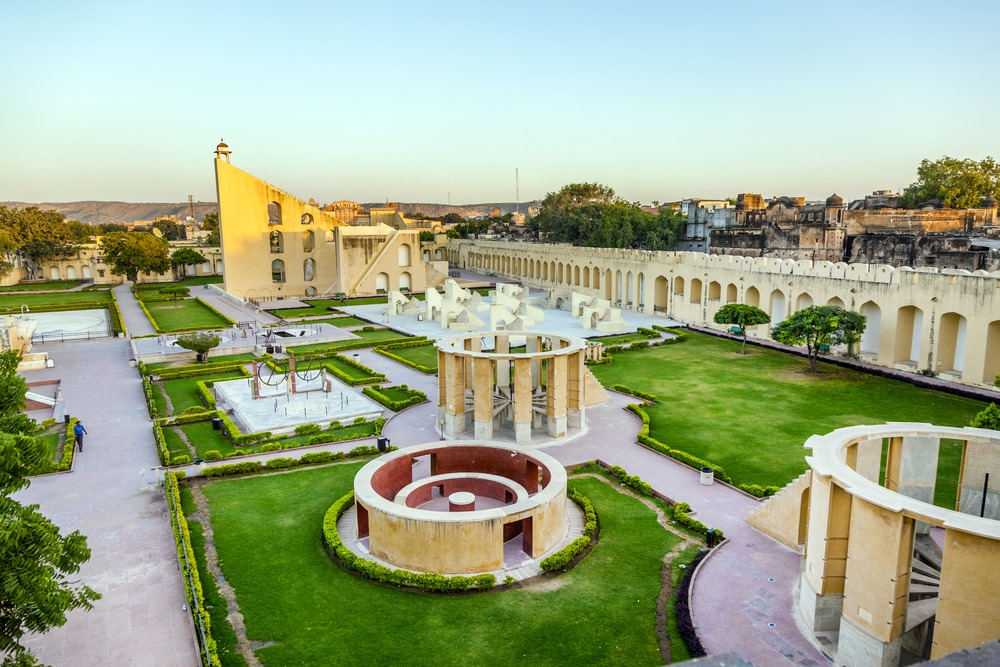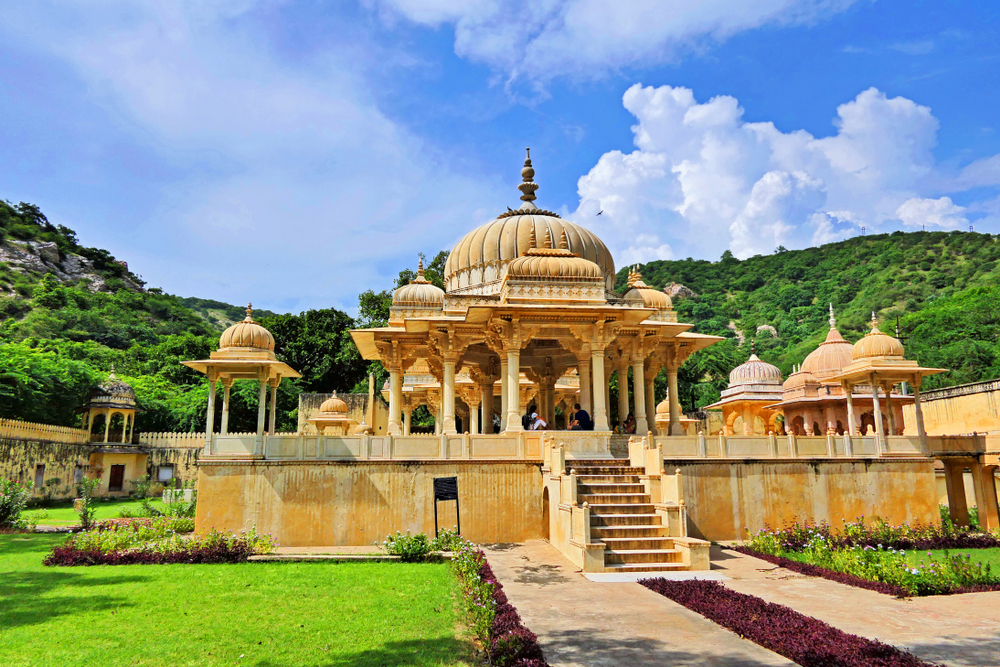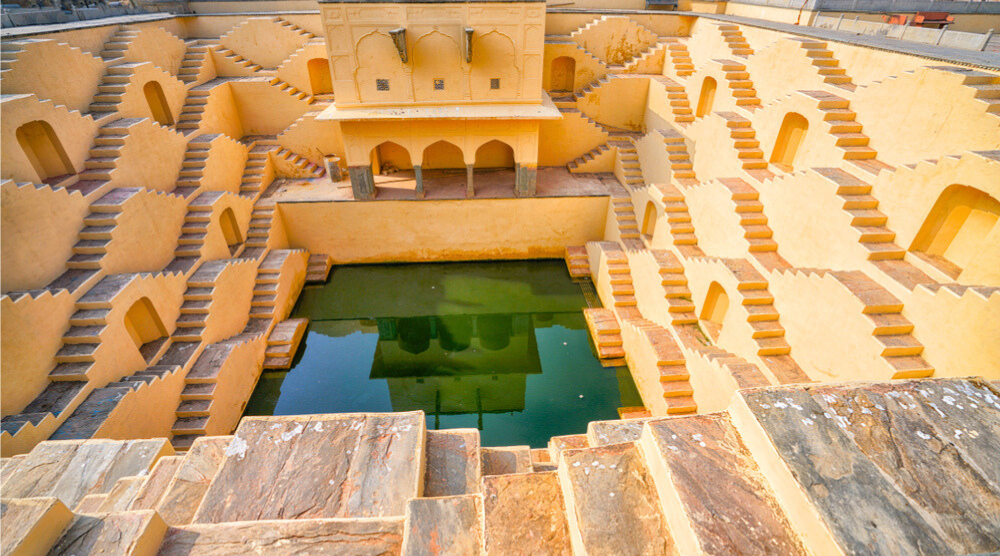Jaipur Sightseeing Tour
Pink-City Jaipur
Jaipur City Sightseeing
Jaipur, famously known as the Pink City, is a vibrant blend of royal heritage, rich culture, and architectural brilliance. As the capital of Rajasthan, it stands as a symbol of India’s regal past, offering magnificent sights like the Amber Fort, City Palace, and the iconic Hawa Mahal. The city's streets buzz with colorful bazaars, traditional handicrafts, and authentic Rajasthani cuisine, making it a haven for cultural enthusiasts and shoppers alike. Jaipur is also a key stop in the Golden Triangle tourist circuit, offering a seamless mix of history, hospitality, and modern charm that captivates every traveler.
Gallery
Itinerary
What's included & exclude.
Include /Optional including
Jaipur City Sightseeing Day-One
Birla Temple - City place - Albert hall museum (Centre museum) - Jantar mantar - Hawa Mahal - Jal Mahal - Royal Gaitor - Kanak Garden - Khajana Mahal.

AMBER FORT & PALACE
Amer Mahal is a unique example of Rajput architecture. Some of its buildings and works have the influence of Mughal architecture.Built of red sandstone and marble, the imposing, imposing palace is built on four levels, each with a courtyard. These include the Diwan- i-Aam, or "Hall of Public Audience", the Diwan-i-Khas, or "Hall of Private Audience", the Sheesh Mahal (Mirror Palace), or Jai Mandir, and the Sukh Niwas where a cool climate is created artificially. It is formally created by the winds that run over a water spring inside the palace. Hence, Amer Fort is also known as Amber Palace. Traditional Market.

Panna Meena Ka Kund
Amer is a sub-city of Jaipur,Rajasthan that dates to the medieval period. Today, most travelers who visit Amer come to see the famous Amber Fort. But many are unaware that just next to the massive castle lies a yellow-colored stepwell, built in the 16th century. Stepwells are not new to the state of Rajasthan, as half of its land is on dry desert soil. Many locals suggest Panna Meena ka Kund was built so the people of Amer could collect water, which was later used at many temples nearby. Women also came here to fill their water pots for household work. Apart from this, Panna Meena ka Kund was a resting place for many travelers—business people and saints ali

JAL MAHAL (WATER PALACE)
The Jal Mahal is an exquisite palace built at the middle of the Man Sagar Lake. The palace stands bright with five floors, four of which remain under water. Jal Mahal was built by Maharaja Madho Singh I to serve as a lodge for his duck hunting parties. The Mahal is a testament to the bond that was formed between the Rajput’s and Mughal Empire. The architecture of the palace has resemblance of both types of construction.

HAWA MAHAL (Wind Palace)
Hawa Mahal, also known as “Palace of Wind”, was built in 1799 as an extension to the Royal City Palace of Jaipur. Hawa Mahal is a five story building that is situated in the heart of the city of Jaipur. It has a beehive like structure and is made of red and pink sand stone lined with white color to make it vibrant. It is pink like the rest of the pink city of Jaipur. for the woman of the royal palace. In medieval India a ‘pardah’ system was followed where the royal woman followed seclusion. In order for royal woman to be connected to the outside would the Hawa Mahal was built. The queens and princesses could look at the various processions and events through the many windows of the Hawa Mahal.

CITY PALACE Jaipur
City Palace of Jaipur is one such splendid historical architecture which you can’t afford to miss if you are in Jaipur. This palace complex has a massive array of buildings, gardens, temples, museum and courtyard presenting the hues of Rajputana Architecture of ancient times. The city palace was a home to the Maharaja of Jaipur. Created by Sawai Jai Singh II, this palace is a huge attraction to tourists who are huge fans of ancient history and art. The city palace if Jaipur is a paragon of the royal grace and historic importance of Rajasthan’s culture.

JANTAR MANTAR Jaipur
Jantar Mantar is a chain of observatories constructed by Maharaja Sawai Jai Singh II in five cities of India with Jantar Mantar-Jaipur being the largest and well-maintained of them all. The astronomical observatory of Jantar Mantar is used to measure the astronomical activities of the position of stars and exact movements of the earth around the Sun. It has a total of nineteen astronomical instruments and an equinoctial sundial. Jantar Mantar of Jaipur is a UNESCO world heritage site because of its architectural grandeur.

ALBERT HALL MUSEUM
When the foundation stone of Albert Hall was laid during the visit of the Prince of Wales, Albert Edward to Jaipur in 1876 it had yet to be determined what use it would be put to. There were some suggestions about cultural or educational use or as a town hall. However in 1880 Maharaja Sawai Madho Singh II approved a suggestion by Dr. Thomas Holbein Hendley, Resident Surgeon (whose interests extended beyond his medical responsibilities) to open a museum of Industrial Arts to display products of local craftsmen. A small museum was created in 1881 in temporary accommodation and proved most popular. Additionally, Hendley in 1883 mounted a Jaipur Exhibition at Naya Mahal (old Vidhan Sabha).

ROYAL GAITOR
The Royal Gaitor Tumbas was a tomb for the kings of that reign namely Madho Singh II, Jai Singh II, and Pratap Singh. This place offers restfulness to someone who seeks solitude after strolling around the chaos of the city. The royal cenotaphs of the Rajas are built here in their honor. The cenotaph of Maharaja Jai Singh II is personage made of white marble with intricate carvings on it.

KANAK GARDEN Jaipur
It is built in a valley surrounded by Aravali hills and is located on the way to the Amer Fort at the bottom of the Nahargarh hill. The place is approx 8 km north of the Jaipur city. he garden complex is having many nearby tourist attractions as the Amer fort Palace, The garden adds more beauty to the region. This is the best place for sightseeing, strolling, relaxing and photography. Apart from the nature, you can find temples and other structures here. Apart from flora-based attractions, this garden is also a treat for bird watchers you can spot a few migration birds like Neel Kanth, Kingfisher, spotted dove and others.

Kajana Mahal Jaipur
Kajana Mahal, Jaipur is a hidden gem that offers a glimpse into Rajasthan's royal past. Located in the heart of Jaipur, this stunning palace combines traditional Rajasthani architecture with intricate designs and rich history. Known for its serene ambiance, Kajana Mahal is a perfect spot for those looking to experience Jaipur's regal charm away from the more tourist-heavy areas. It offers a peaceful retreat with exquisite courtyards, lush gardens, and a taste of royal luxury.

Birla Mandir Jaipur
Birla Mandir, Jaipur is a stunning white marble temple dedicated to Lord Vishnu and Goddess Lakshmi. Located on the Moti Dungari Hill, it offers a serene atmosphere with breathtaking views of the Pink City. The temple is known for its intricate carvings, beautiful architecture, and peaceful surroundings. A perfect blend of modern and traditional styles, Birla Mandir is a must-visit for those seeking spiritual solace and a glimpse of Jaipur’s architectural beauty.
Jaipur City Sightseeing Day-two
Jaigarh fort - Nahargarh fort - Wax museum - Amber fort - Panna meena kund - Sanjay museum - Elephant village (optional) - Jaipur traditional Market.

Nahargarh Fort
Nahargarh Fort is a historic fort perched on the Aravalli Hills, offering spectacular views of Jaipur city. Built in 1734 by Maharaja Sawai Jai Singh II, it served as a retreat and defense fort for the royal family. The fort’s architecture blends Indian and European styles, with intricately designed rooms and beautiful frescoes. A popular spot for evening outings, Nahargarh Fort also features a rooftop restaurant, making it a perfect place to enjoy both history and scenic sunsets over the Pink City.

Jaigarh fort
Jaigarh Fort is a majestic hilltop fort located on the Aravalli range, overlooking Jaipur. Known as the "Fort of Victory," it was built to protect the Amer Fort and its palaces. The fort is famous for housing the world’s largest cannon on wheels, Jaivana Cannon, and offers panoramic views of the surrounding landscape. With its impressive architecture, strong defensive walls, and historical significance, Jaigarh Fort is a must-visit for history buffs and architecture enthusiasts.

Wax museum Jaipur
Wax Museum Jaipur is a unique attraction that brings famous personalities from various fields to life through life-like wax sculptures. Located near the famous Nahargarh Fort, the museum showcases a variety of figures, including Bollywood stars, political leaders, historical figures, and sports icons. The museum offers a fascinating experience for visitors of all ages, providing a fun and interactive way to explore the world of celebrity and history. It’s a great stop for photography and learning about notable figures in a creative setting.

Sanjay museum Jaipur
Sanjay Museum, located in Jaipur, is a unique museum that showcases an eclectic collection of antiques, artifacts, and historical items. The museum is known for its vast assortment of traditional Rajasthani art, old coins, sculptures, and vintage furniture. It also displays a collection of rare weapons, textiles, and folk art, offering a deep dive into the region's rich cultural heritage. With its fascinating exhibits, Sanjay Museum provides a glimpse into Jaipur's royal past and is a great spot for history enthusiasts and art lovers.

Elephant Village Jaipur (optional)
Elephant Village in Jaipur is a unique and heartwarming experience for animal lovers. Located on the outskirts of the city, this village offers visitors the chance to interact with elephants in a natural, caring environment. Guests can feed, bathe, and even paint these majestic creatures, while learning about their history and significance in Rajasthani culture. The experience highlights ethical elephant care and provides an opportunity to get up close with these gentle giants. It's an optional, but memorable, part of your Jaipur visit, perfect for those seeking a hands-on cultural experience.

Jaipur traditional Market
Jaipur's Traditional Markets are a vibrant and colorful reflection of the city's rich heritage. Markets like Johari Bazaar, Bapu Bazaar, and Tripolia Bazaar are famous for their lively atmosphere and variety of goods. Here, you’ll find a wide array of traditional Rajasthani jewelry, handicrafts, textiles, pottery, and spices. The markets are also great for picking up beautiful Bandhani sarees, Jaipur block-print fabrics, and lac bangles. A stroll through these bustling bazaars is a perfect way to immerse yourself in Jaipur's culture and take home a piece of its royal charm.
Other Monuments at Jaipur City - Optioal thinks.
Sisodiya Rani Bagh - Jawahar Kala Kendra - Anokhi museum Jaipur.
Other Optioal Monuments in Day 2 or Day 3

Sisodiya Rani Bagh
Sisodiya Rani Ka Bagh The glorious history of Rajputs of Rajasthan is full of folk tales and glorious buildings, but it is also full of natural beauty.Sisodia Rani Bagh is a great example of this, Sisodia Rani Bagh to be built in Sawai Madho Singh for her queen, This garden is a symbol of love made in 1728, it is a combination of Indian and Mughal architecture, here green trees, beautiful fountains, ponds, flower beds enhance the beauty of the garden. Sisodia Rani Bagh Entertainment Site was a beautiful tourist spot to enjoy the royal queens in the summer, and away from Rajasthan tourists and Jaipur tourists come to see it. Sisodia Rani Bagh was the entertainment venue to enjoy the royal queens in the summer. Tourists from Jaipur and Rajasthan come from far and wide to see this.

Jawahar Kala Kendra
Jawahar Kala Kendra In the vast spectrum of Indian Art and Heritage, the need of incubating and nurturing art and artists was prominently felt and the phenomenon brought the establishment of an international multi art and culture centre in Jaipur in 1993, popularly known as JKK. This international institution focused to the preservation and promotion of the various genres of Indian art and culture; embellishes further the visual and cultural heritage of Jaipur.

Anokhi museum Jaipur
The creation of the Anokhi Museum of Hand Printing was the initiative of Rachel Bracken-Singh and her husband Pritam Singh. Pritam’s father, John Singh, purchased the dilapidated Chanwar Palkiwalon ki Haveli mansion in the late 1970s and began a 3 year renovation project in 1989. With the guidance of architects, Nimish Patel & Parul Zaveri of Abhikram, the building was restored to its original grandeur. By demonstrating the feasibility of using indigenous materials, time-honoured construction methods and skilled local craftsmen, the preservation project earned a UNESCO award for ‘Cultural Heritage Conservation’ in 2000.









